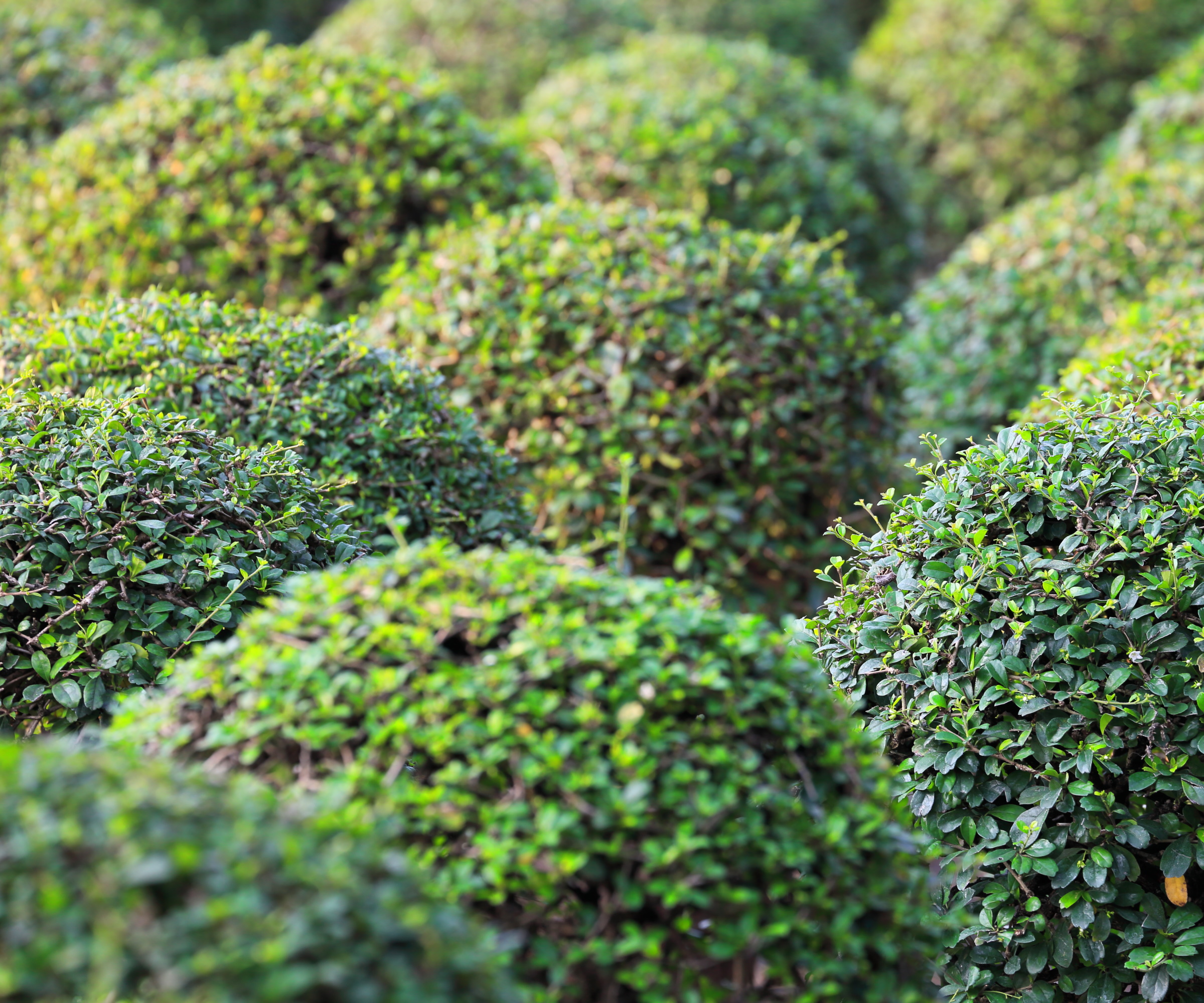How to master the art of cloud pruning – pro tips and tools for the job
An ancient technique with spectacular results: expert advice on how to achieve cloud pruning success in your yard


Cloud pruning, also known as Niwaki, is an ancient Japanese technique that turns shrubs and small garden trees into works of art. It creates elegant, balanced shapes and flow within an outdoor space, and with a bit of practice and patience, it's a technique you can master at home, too.
This creative approach to pruning trees and shrubs accentuates the plants' individual characteristics and harmonizes them with their surroundings. Trees, shrubs and hedges are clipped closely to form organic, curved, and billowing shapes, echoing cloud formations. The results create stunning, sculptural focal points, which don't have to be limited to Japanese-style garden ideas. Cloud pruning can complement all sorts of plots, from traditional to the ultra modern.

Which shrubs and trees are suitable for cloud pruning?
Japanese privet and box-leaved holly create stunning results when cloud pruned. Buxus is another common choice and a classic for topiary. Landscaping with evergreens is always a popular choice, and small pine or yew trees work well for cloud pruning. Look for plants with interesting branch formations, as these will make the basis of a design.
'The most common cloud formations are comprised of either buxus, yew, privet or varying pines, says David Angelov, Founder of PlantParenthood. 'This is mostly because they can take arbitrary pruning (i.e. they don't have to be pruned to a node) and can withstand constant touch-ups.

David Angelov is CEO and Founder, Master Gardener of PlantParenthood in Massachusetts. PlantParenthood is a quickly growing garden design, maintenance, and education company providing interior and exterior garden design and installation services. David has five years of experience as an apprentice to a renowned garden designer on the North Shore of Massachusetts and broke away to start his own business.

What tools do I need to get started?
Before you begin cloud pruning, you'll need to ensure you've got your best pruners or secateurs to hand. The latter produce better-looking results on large-leafed plants. Make sure your pruners are sharp and clean, as this will help you get a smooth, precise cut when you start shaping your shrub or tree.
'Whether you are using hand shears or loppers, a very sharp blade will decrease the spread of disease and will make a cleaner cut, leading to a faster healing time,' says David Angelov. 'A pruning sharpener is a great and cheap investment that will prolong the life of your equipment. Of course, your hands will also thank you.'
Before you get started, here are some cloud pruning essentials to consider adding to your shopping list:

How to master the cloud pruning technique
Plan the shape you're aiming for before you start pruning, and remember to keep stepping back as you work to get a better view of the whole plant.
Working with the natural form of the tree, and finding a balance between what the plant wants to do and what you want the final result to look like, will often work well.
It's generally easier to start cloud pruning immature shrubs, as they will have had less time to grow and develop their own shapes. Begin by taking off growth from the trunk or center of the plant and main branches, so that you are left with growth only at the ends of each branch.
Avoid pruning the tips of the main branches until the plant has reached the desired height and width. In the meantime, simply prune the side shoots instead. Once your tree or shrub has matured a bit more, you can really focus on creating the shapes you want at the end of your branches - these are often spheres or oval shapes with round tops and flat bottoms.
If you're starting out by planting shrubs that you plan to prune into cloud formations, try not to line things up in a row as that is rarely the case in nature, says David Angelov. 'Stagger the shrubs and use curves when planning for a more natural look. Mix mature shrubs and younger smaller ones of the same cultivar,' he adds. 'There must be a flow and a mass to a true cloud pruning installation, so by using one type of small leaf evergreen like a boxwood in large quantities without anything planted in between leads to a grandiose effect.'

Which plants work well alongside cloud-pruned shrubs?
Try cloud pruning a few different plants in your garden and creating a tapestry of structured, sculptural shapes, alongside fluffier, looser-pruned shrubs for balance.
Although cloud-pruned shrubs and trees look exquisite in gravel gardens and in large pots, they also look good in a border. You could create contrast by adding plants with lots of movement, such as bamboos or ornamental grasses as complementary planting picks. Japanese maples also come in a wide range of hues, and provide texture and contrasting form.
FAQs
What is the most essential part of cloud pruning?
The most important thing when planning to cloud prune a tree or shrub in your yard is to have good quality, clean and sharp pruning shears. They will give you neat cuts, and will make your job so much easier. Ensuring your tools are clean will also mean your plant stays healthy and free of disease.
Are there any shrubs not suited to cloud pruning?
Avoid cloud pruning rhododendron, azalea, hydrangea, or any shrubs that are sensitive to pruning, have really big leaves, or are deciduous.
It can take several years to create your desired effect with a cloud-pruned tree or shrub, especially with young plants, but with patience and continued gentle pruning your efforts will most certainly be rewarded.
Sign up to the Homes & Gardens newsletter
Design expertise in your inbox – from inspiring decorating ideas and beautiful celebrity homes to practical gardening advice and shopping round-ups.

Holly started writing about gardening five years ago, and she is a regular contributor to Homes & Gardens. She has also written many gardening features for Woman & Home and Real Homes, too. She has previous experience as a professional gardener, where she helped to plant and maintain private gardens. Holly has also looked after allotment plots over the years and loves to grow her own flowers and veggies from seed. In her spare time, she enjoys visiting local gardens, botanical drawing, and tending to her ever-growing collection of houseplants.
- Rachel BullHead of Gardens
- Jill MorganContributing Editor
-
 How to grow crepe myrtle in pots – and transform even the smallest of yards with dazzling flowers this summer
How to grow crepe myrtle in pots – and transform even the smallest of yards with dazzling flowers this summerGrowing crepe myrtles in pots will inject splashes of brilliant color into your outside space
By Thomas Rutter Published
-
 I've spent over 200 hours testing vacuums and swear by my two Dysons – this is how I properly clean a Dyson vacuum filter for longer-lasting appliances
I've spent over 200 hours testing vacuums and swear by my two Dysons – this is how I properly clean a Dyson vacuum filter for longer-lasting appliancesYour Dyson vacuum will last much longer and clean at its best
By Dan Fauzi Published


